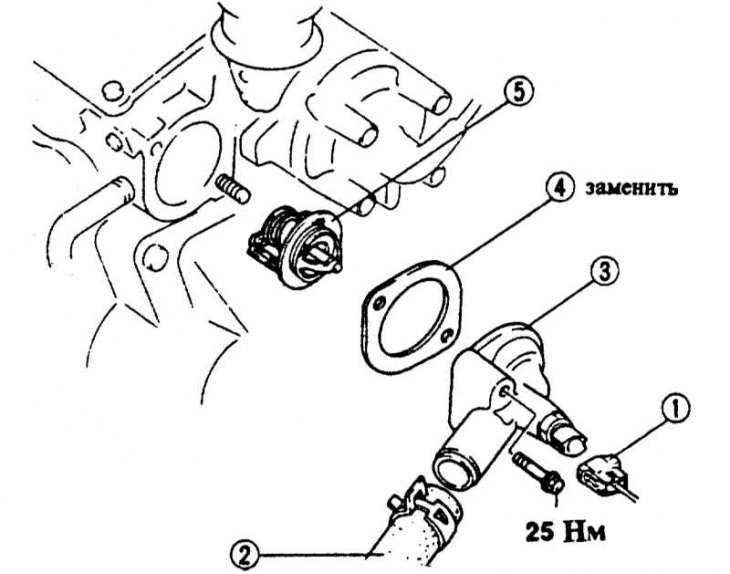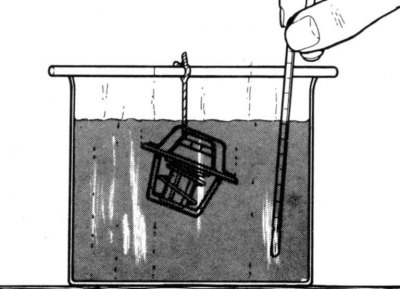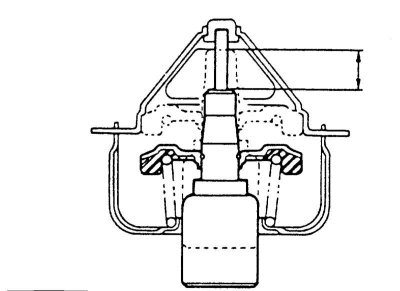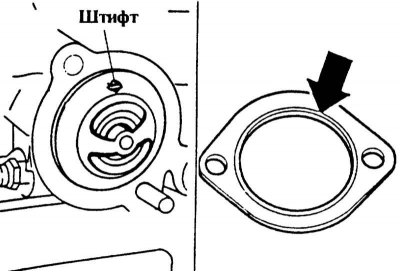Attention! If the engine becomes hot after a short drive, it may be that the radiator is clogged due to lime deposits, the fan has failed, or the V-belt has broken (except diesel engine).
The thermostat is located on the left side in the cylinder head behind the coolant inlet.
Removing
1. Drain and collect coolant, see Section Current service.

2. Disconnect the coolant hose by first loosening and fully sliding the clamp.
3. Disconnect plug -1- of thermal switch. The temperature switch is located on the coolant outlet pipe -3-.
4. Loosen the 2 fastening bolts and remove the outlet fitting -3- with the gasket -4- and the thermostat -5-.
Examination

1. Slowly heat the thermostat in a container of water. In this case, the thermostat should not touch the walls of the vessel. The thermostat must be completely immersed in water. Monitor the temperature with a suitable thermometer.
2. At +82°C (diesel: +86°C) the thermostat should start to open.
Attention! The opening temperature may vary depending on the thermostat. Its value is on the thermostat.
3. At +95°C (diesel: +100°C) the thermostat must be fully open, which means that the damper must move at least 8.5 mm from the stop.
4. Check that the thermostat closes completely when it cools down, otherwise it must be replaced.
Installation
1. Insert the thermostat into the housing so that the pin is above the damper.
2. Insert a new thermostat gasket with the pressed side against the cylinder head.
3. Tighten the mounting bolts with force 25 Nm.
4. Connect the plug.

single stage type

5. Connect the coolant hose and secure with a clamp.
6. Fill in coolant, see Section Current service.
7. Warm up the engine and check the fittings for leaks, it is possible to carefully tighten the mounting bolts.
